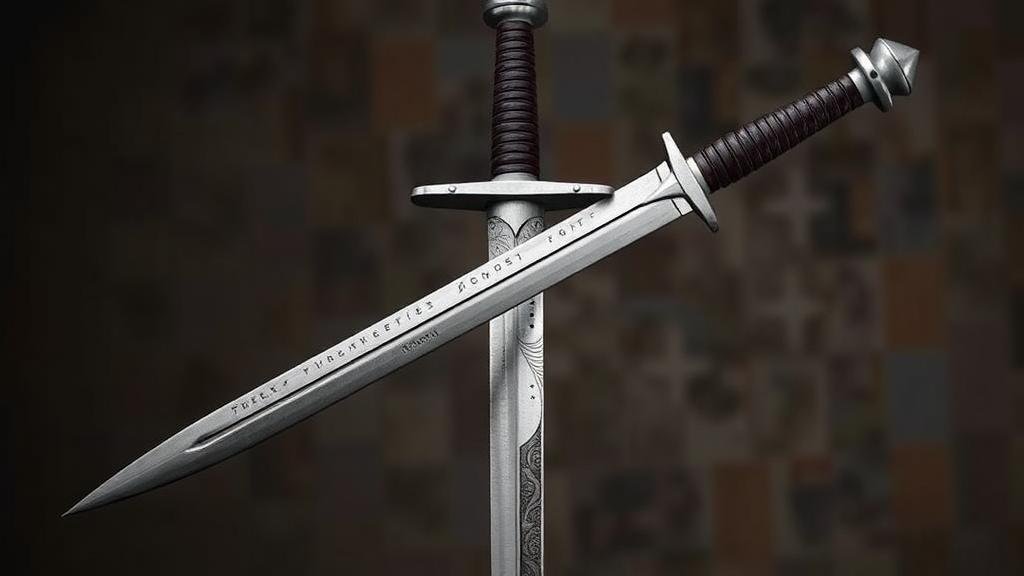Exploring the mystery of the Viking Ulfberht swords and their advanced metallurgy.
Exploring the Mystery of the Viking Ulfberht Swords and Their Advanced Metallurgy
The Ulfberht swords, often regarded as one of the finest examples of medieval craftsmanship, evoke intrigue and admiration among historians, archaeologists, and sword enthusiasts alike. Dating back to the Viking Age, roughly between the 9th and 11th centuries, these remarkable weapons reveal an unexpected level of metallurgical sophistication that challenges our understanding of pre-industrial technology.
The Historical Context of Ulfberht Swords
The origins of Ulfberht swords can be traced back to the regions of present-day France, where the name Ulfberht is believed to represent a master swordsmith rather than a specific workshop. Over 170 Ulfberht swords have been discovered across Europe, particularly in Scandinavian countries and burial sites, indicating their significance among Viking warriors. swords were often inscribed with the name ULFBERHT in a distinctly stylized form, suggesting a brand of quality craftsmanship.
Metallurgical Innovations
What sets Ulfberht swords apart from their contemporaries is the high-carbon steel used in their production. This steel was subjected to advanced techniques that produced a material with remarkable properties:
- Exceptional hardness and edge retention
- Greater resistance to breaking and deforming
- Superior performance compared to wrought iron swords common in that era
Historical analyses indicate that the Ulfberht swords contained about 1.2% to 1.5% carbon, which far exceeds the carbon content of typical Viking swords, which averaged around 0.5% to 0.7%. This high carbon content significantly contributed to the swords durability and effectiveness in battle.
Manufacturing Techniques
Another fascinating aspect of the Ulfberht swords is the unique techniques employed in their manufacturing:
- Pattern Welding: This revolutionary method involved fusing various metal strips together, providing both aesthetic patterns and functional benefits.
- Quenching: The swords were heat-treated and quenched, a process that enhanced their hardness and strength.
- Refinement of Raw Materials: The steel was likely made from bloomery iron, which was more refined than the crude ores that were typically used by the Viking smiths.
These sophisticated techniques not only showcased the skill of the swordsmiths but also pointed towards cultural exchanges between the Vikings and other civilizations, particularly those in the Islamic world, where advanced metallurgical knowledge was more prevalent.
The Significance of Ulfberht Swords
The societal value of the Ulfberht swords went beyond mere functionality. became symbols of status and power, wielded by elite warriors known as berserkers. In battles, the confidence instilled by carrying an Ulfberht sword could alter the morale of troops.
Also, the swords presence in burial sites reveals their importance in Viking funerary practices. For example, a notable find in the Oseberg ship burial (discovered in 1904) highlighted how these swords were not only tools of war but also items that represented wealth and honor in the afterlife.
The Mystery of Forged Strength
Despite their immense historical significance, the precise methods behind the creation of Ulfberht swords remain partially shrouded in mystery. Notably, the technology of producing high-quality steel at that time was not widespread among the Vikings, raising questions about how Ulfberht smiths achieved such standards. Some scholars suggest the influence of Middle Eastern metallurgy, pointing towards trade routes that could have enabled the exchange of knowledge and materials.
Modern Implications and Legacy
The intrigue surrounding Ulfberht swords continues to captivate modern researchers. Advances in metallurgical sciences have allowed for detailed examinations of the material properties of these ancient weapons. For example, X-ray diffraction studies reveal the precise crystalline structures within the steel, lending insights into the methods utilized by ancient smiths.
Today, swordsmiths and blacksmiths often seek to replicate Ulfberht swords, not only to pay homage to historical craftsmanship but also to explore the possibilities of modern metallurgy through ancient techniques.
Conclusion: Lessons from the Past
The Ulfberht swords serve as a testament to the ingenuity of Viking craftsmanship and the rich cultural exchanges that shaped the medieval world. By studying these weapons, we can appreciate the historical context that fostered innovation in metallurgy.
For those interested in the art of sword making or historical craftsmanship, exploring the Ulfberht swords provides valuable lessons in blending tradition with innovation. Embracing historical techniques while incorporating modern technologies could unlock new potential in the production of high-quality tools and artifacts.


